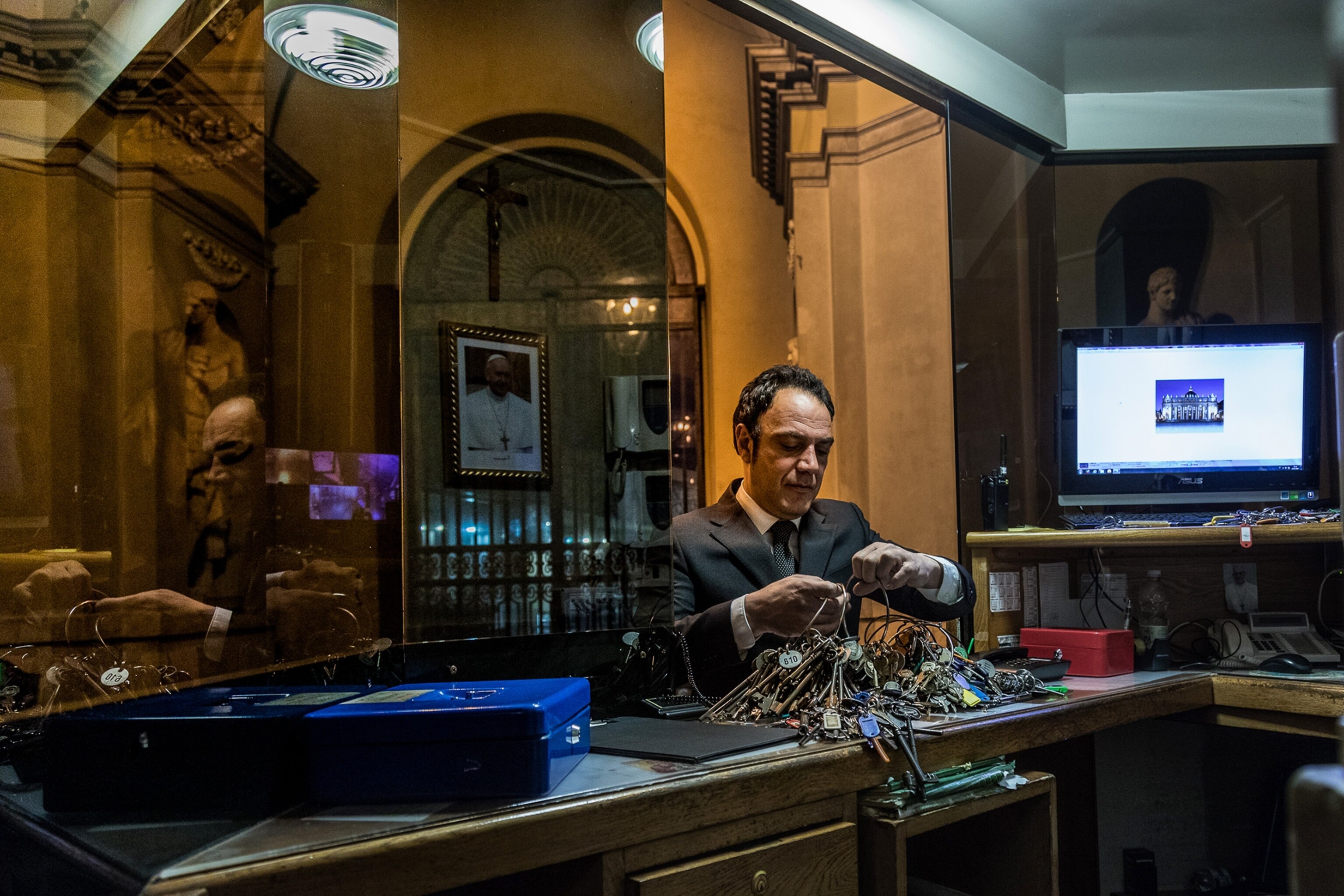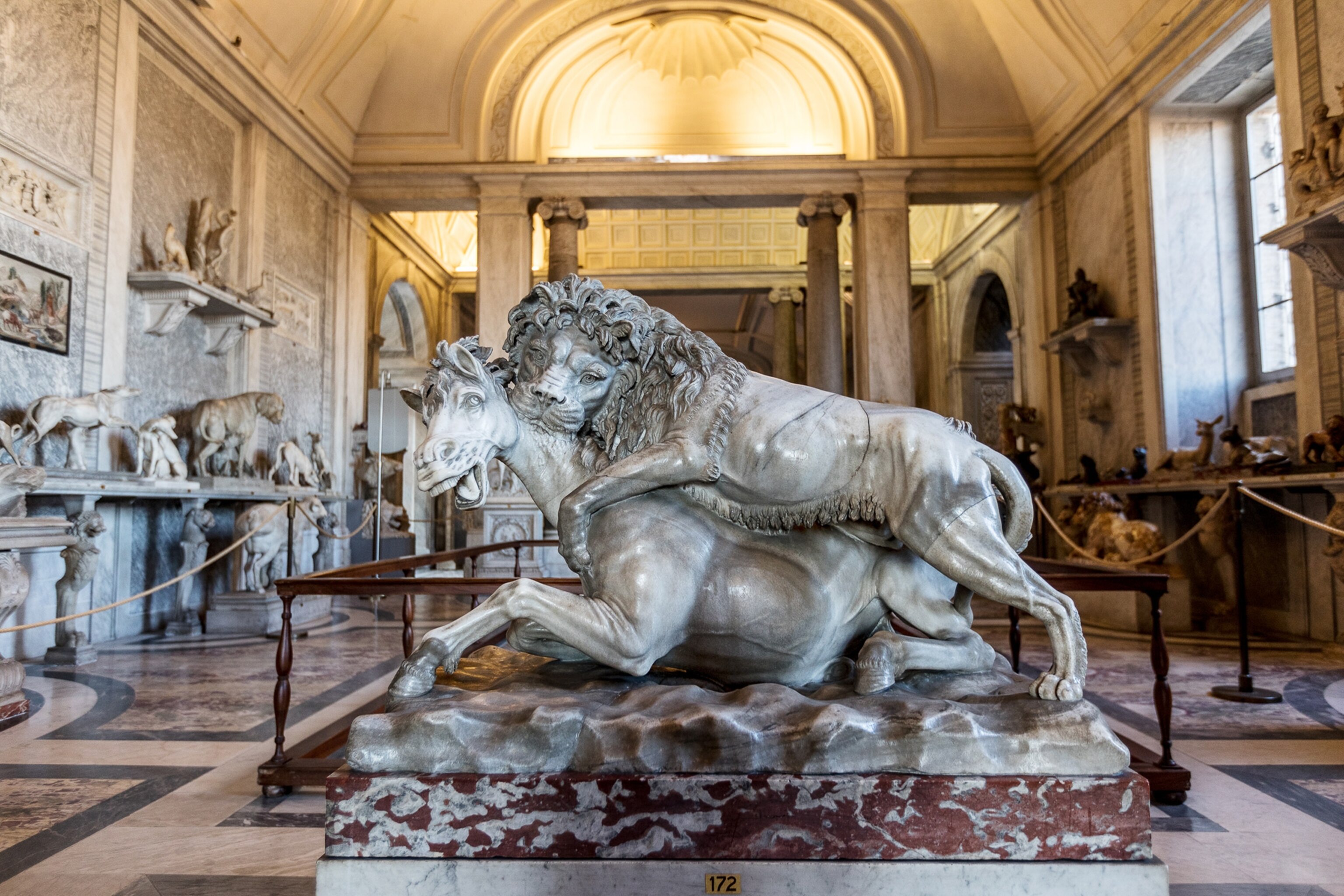
Meet the man with the keys to the Vatican
Every morning Gianni Crea unlocks the doors to history.
Gianni Crea is intimately familiar with the contours of history. Almost every morning for the past six years, he’s opened the doors to the Vatican Museums. He’s experienced the stillness of the Sistine Chapel at dawn, studied the shadows of Caravaggio, and admired the textures of ancient Egypt.
“Yes, I’m a key keeper, head key keeper, but I’m still a doorman that opens a museum,” says Crea, a devout Catholic. “But I open the doors to the history of art and the history of Christianity—and it’s the biggest and most beautiful history that exists in the world.”
Crea has worked in the Vatican for 20 years and as head clavigero for six. “When I hold these keys, worn by the passage of time, from this moment I become responsible beyond just myself,” he says.









His mornings begin at 5:30 a.m. in a secure bunker that holds 2,797 keys. Crea and his team of 10 clavigeri—five each on the morning and evening shifts—open and close 300 doors every day, mobilizing about 700 employees along with them. They traverse a 4.6-mile route through the museums which see up to 28,000 visitors per day.
“I know the smell that is waiting for me when I open the first door is the smell of history—the smell that men before us have breathed in.” It’s the very same ground that they have walked, loved, and cried on, he says.


Hardwired for Art
The Vatican Museums house, protect, and restore tens of thousands of priceless works that span ancient to modern times, but perhaps none are more iconic than the seat of the papal conclave. Crea still remembers being overcome with emotion the first time he accompanied an older key keeper for the opening of the Sistine Chapel in 1999.
“They’re so beautifully rendered in their details—the movements, the twisting, the musculature,” Crea says. “There is something there—something so special, so magical.”
Striking in their totality, Michelangelo’s frescoes blanket 12,000 square feet of the chapel. Scenes from the Book of Genesis and more than 300 figures reveal the intricacies of the human form. Crea has seen people of all faiths moved by its beauty.
In fact, some scientists propose that we are hardwired to have an emotional response to art, a principle that philosophers have strived to grasp for centuries.
“The painting will move the soul of the beholder when the people painted there each clearly shows the movement of his own soul,” wrote Florentine artist Leon Battista Alberti in 1435, nearly a century before the completion of the Sistine Chapel. "We weep with the weeping, laugh with the laughing, and grieve with the grieving.”
Today, neuroscientists are studying the biological basis of this repsonse in their labs—a relatively young field known as neuroaesthetics.
According to limited neuroimagining research, when we view images of bodies in motion or even perceive the movements required to make brushstrokes, our own motor systems are activated—this is known as the mirror neuron system, which is involved in social communication, empathy, and imitation. Other studies have found that the regions of the brain implicated in emotion processing are used when we look at art, suggesting an innate relationship between aesthetic judgement and emotion.


The Universal Language
Long before the advent of neuroimaging techniques, Leo Tolstoy proposed that art is “a means of union among men, joining them together in the same feelings”—a medium that is often felt before it is consciously understood. Like Tolstoy, Crea believes in the power of art—an expression of our shared human condition—to unite people.
“Everyone can find something beautiful, something moving,” he says. “The Vatican Museums, in my opinion, should be visited because they give you an understanding of art and history, regardless of your faith.” Crea suggests the Vatican Gardens are a model of tolerance—where plants from all over the world bloom and thrive in one place.
Pope Francis shared similar sentiments in his 2015 publication of La mia idea di Arte, which highlights the role art plays in evangelization. “The Vatican Museums must increasingly be a place of beauty and welcome. They must welcome new forms of art,” he wrote. “They must open their doors to people from all over the world, as an instrument of dialogue between cultures and religions, a tool for peace.” According to Pope Francis, art should be accessible to everyone regardless of their education or income.



In the same spirit, the Vatican recently started welcoming small groups to accompany Crea on his normally solitary morning routine this summer. “I’ve seen people become emotional when entering the Sistine Chapel, even gasping when the lights in the map room are turned on,” Crea says. “I want to gift the same emotions that I live to others. My desire is to share the emotions that I’ve lived for 20 years with people who visit the Vatican.”
Ultimately art binds us together through our shared culture, history, and humanity, he says. “I’m a simple custodian, but for me the beautiful thing is to be able to conserve and look after the keys of the history.”
Go Further
Animals
- Octopuses have a lot of secrets. Can you guess 8 of them?
- Animals
- Feature
Octopuses have a lot of secrets. Can you guess 8 of them? - This biologist and her rescue dog help protect bears in the AndesThis biologist and her rescue dog help protect bears in the Andes
- An octopus invited this writer into her tank—and her secret worldAn octopus invited this writer into her tank—and her secret world
- Peace-loving bonobos are more aggressive than we thoughtPeace-loving bonobos are more aggressive than we thought
Environment
- Listen to 30 years of climate change transformed into haunting musicListen to 30 years of climate change transformed into haunting music
- This ancient society tried to stop El Niño—with child sacrificeThis ancient society tried to stop El Niño—with child sacrifice
- U.S. plans to clean its drinking water. What does that mean?U.S. plans to clean its drinking water. What does that mean?
- Food systems: supporting the triangle of food security, Video Story
- Paid Content
Food systems: supporting the triangle of food security - Will we ever solve the mystery of the Mima mounds?Will we ever solve the mystery of the Mima mounds?
History & Culture
- Strange clues in a Maya temple reveal a fiery political dramaStrange clues in a Maya temple reveal a fiery political drama
- How technology is revealing secrets in these ancient scrollsHow technology is revealing secrets in these ancient scrolls
- Pilgrimages aren’t just spiritual anymore. They’re a workout.Pilgrimages aren’t just spiritual anymore. They’re a workout.
- This ancient society tried to stop El Niño—with child sacrificeThis ancient society tried to stop El Niño—with child sacrifice
- This ancient cure was just revived in a lab. Does it work?This ancient cure was just revived in a lab. Does it work?
Science
- The unexpected health benefits of Ozempic and MounjaroThe unexpected health benefits of Ozempic and Mounjaro
- Do you have an inner monologue? Here’s what it reveals about you.Do you have an inner monologue? Here’s what it reveals about you.
- Jupiter’s volcanic moon Io has been erupting for billions of yearsJupiter’s volcanic moon Io has been erupting for billions of years
- This 80-foot-long sea monster was the killer whale of its timeThis 80-foot-long sea monster was the killer whale of its time
Travel
- How nanobreweries are shaking up Portland's beer sceneHow nanobreweries are shaking up Portland's beer scene
- How to plan an epic summer trip to a national parkHow to plan an epic summer trip to a national park
- This town is the Alps' first European Capital of CultureThis town is the Alps' first European Capital of Culture
- This royal city lies in the shadow of Kuala LumpurThis royal city lies in the shadow of Kuala Lumpur






